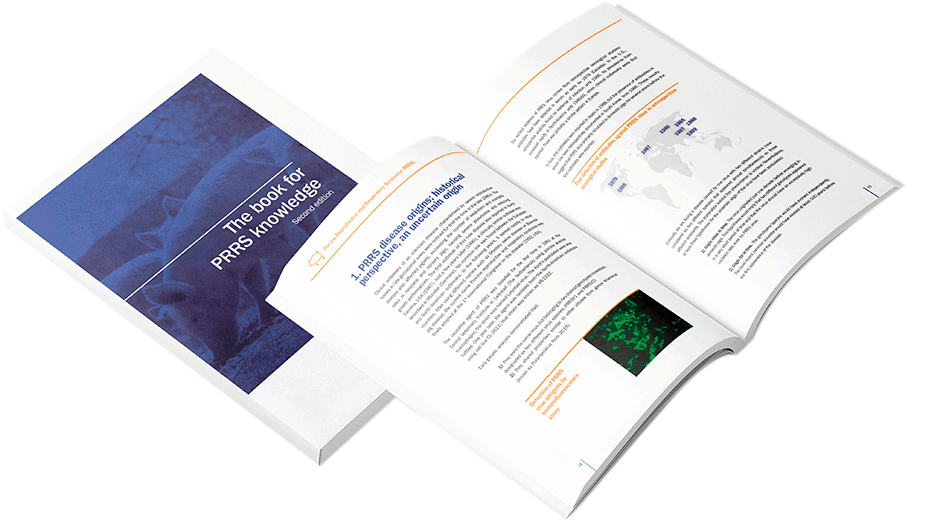1
Immunity against PRRS virus
To better understand the development of immunity against PRRS virus, it is first necessary to have an idea of how the immune system works. From an academic point of view, the immune response is generally divided into innate and adaptive immunity, although it must be considered as a continuous process where close interactions exist. In short, the key differences between innate and adaptive immunity are in terms of time, specificity and memory.
2
Immune dysregulation by PRRS virus
Despite the efforts of the scientific community, crucial points in the PRRS virus immunology are still poorly understood; some might even say that some remain totally obscure.
3
Innate immune response against PRRS virus
PRRS virus and TLRs: Toll-like receptors (TLRs) play a crucial role in innate immunity as one of the pattern-recognition receptors directed against conserved molecules in pathogens. TLR3, 7/8 and 9 in particular are involved in antiviral responses. Preliminary in vitro and in vivo results show that PRRS virus may produce interference or a transient inhibition of some of these TLRs in macrophages and DCs. As a consequence, poor production of several cytokines may occur.
4
Adaptive immune response against PRRS virus
Studies on adaptive immunity against PRRS virus have mainly focused on the development of neutralising antibodies (NAs) and cell-mediated immunity. It has been demonstrated that both NAs and cellular responses are unusual, low and delayed.
5
Why NAs do not develop as strongly and early as non-NAs?
Several hypotheses have been proposed to explain this phenomenon: 1. Modulation in the expression of immunologically relevant cell-surface molecules and poor cytokine stimulation.As described above, the PRRS virus immune dysregulation on APCs can interfere with the correct development of both Th1 and Th2 responses. This fact could lead to delayed mobilisation of adaptive immunity cells and, consequently, slow production of NAs.
6
Why cell-mediated immunity against PRRS virus is slow and weak?
Several hypotheses have been proposed to explain this phenomenon: Impairment or enhancement of some cytokines.Impairment of some cytokines such as IFN-α or TNF-α can affect the development of an effective Th1 immune response. Also, the induction of IL-10 by PRRS virus may negatively regulate the cell responses.



